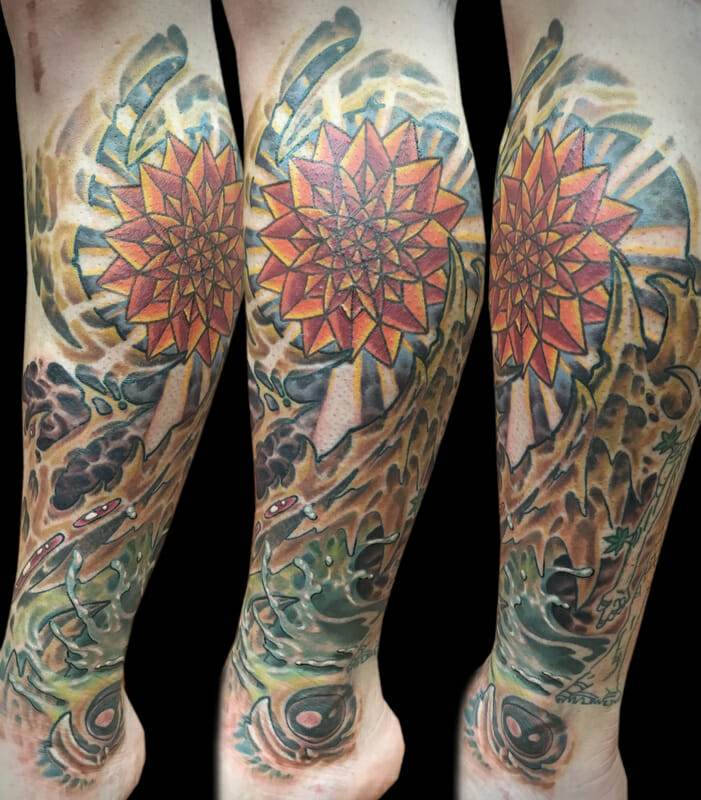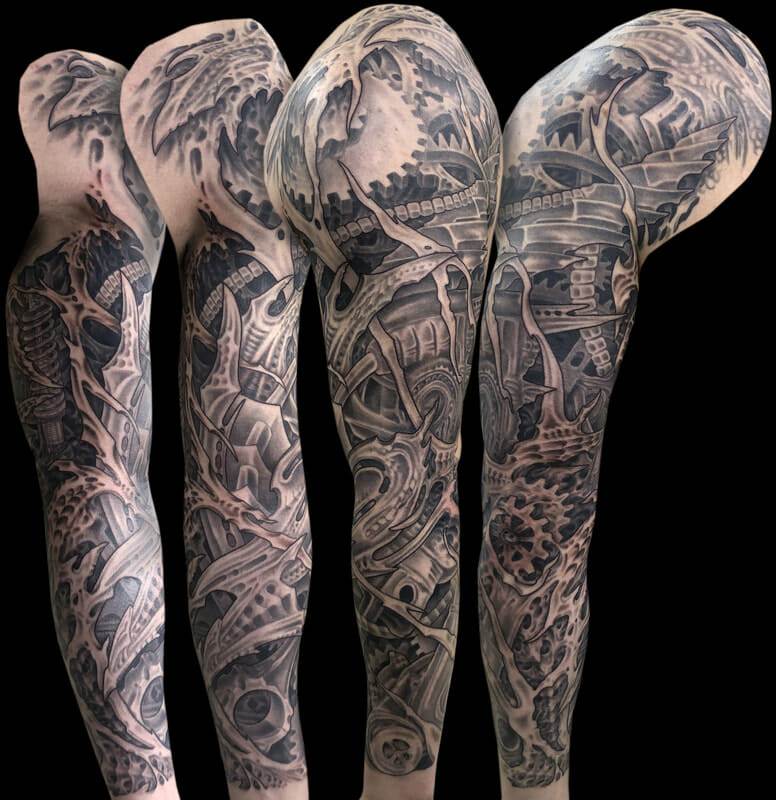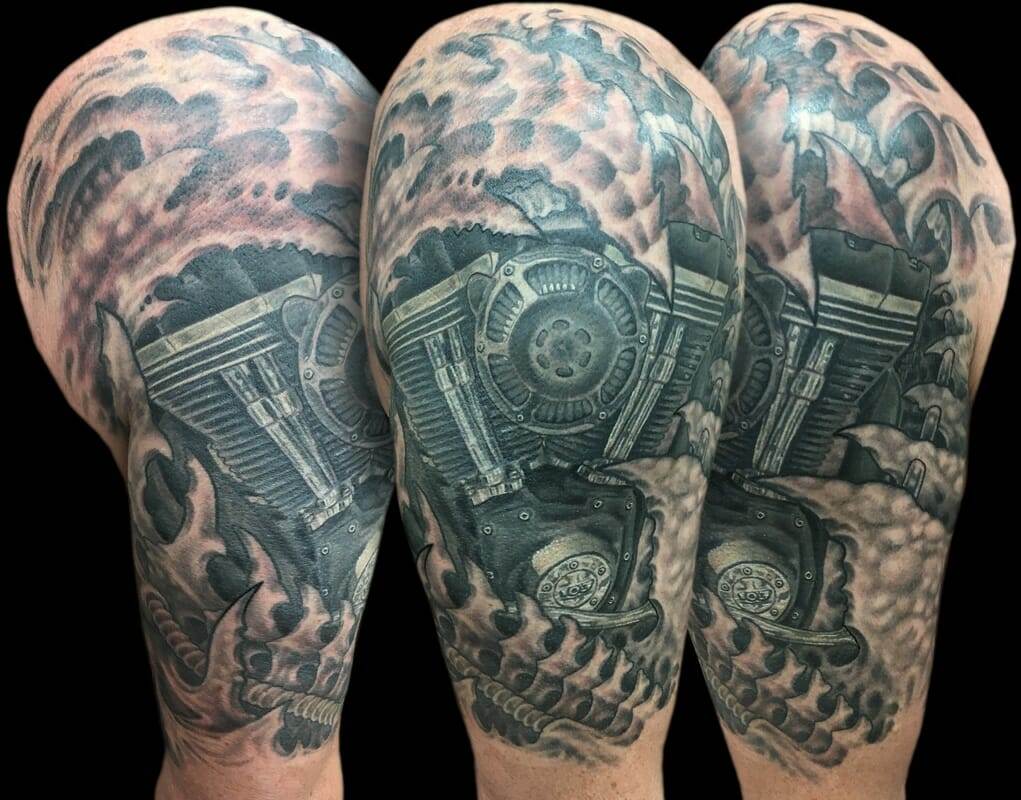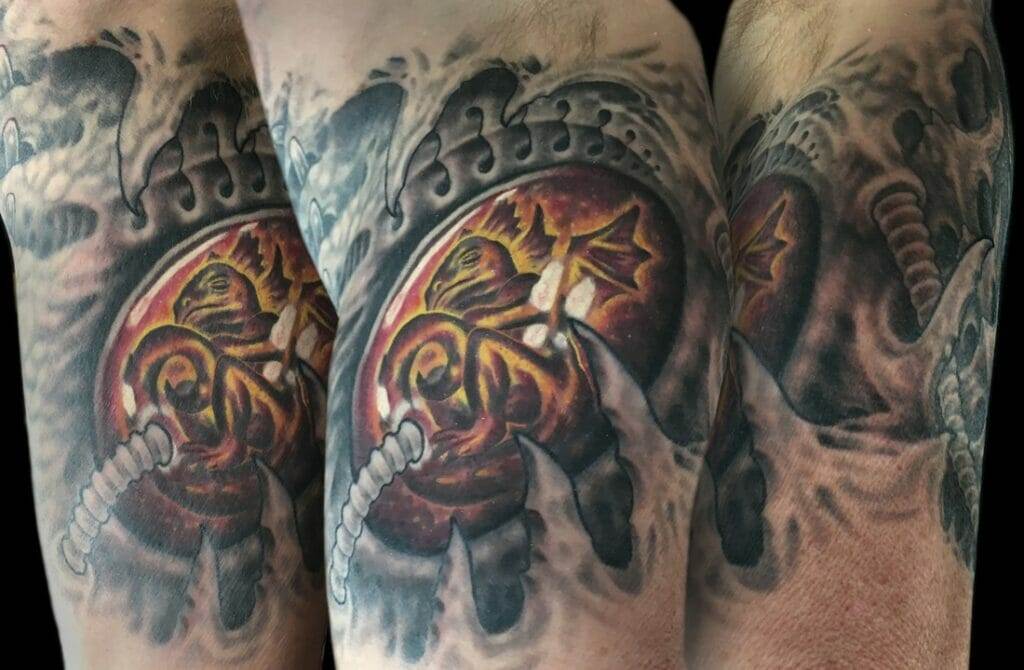Body art has been a part of human culture for thousands of years. From ancient civilizations to modern societies, people have used tattoos, piercings, and other forms of body modification to express themselves, mark important milestones, or simply enhance their appearance. Over time, body art has evolved and adapted to reflect the changing trends and technologies of each era.
One of the most fascinating developments in the world of body art is the rise of biomechanical tattoos. These intricate designs mimic the inner workings of the human body, combining elements of machinery, robotics, and organic forms. Biomechanical tattoos have gained popularity in recent years due to their unique aesthetic appeal and the deeper meanings they can convey.
Biomechanical Tattoos: An Overview
Biomechanical tattoos are a style of body art that incorporates mechanical and organic elements to create a visually striking design. These tattoos often feature gears, pistons, wires, and other mechanical components that appear to be integrated into the wearer’s skin. The goal is to create the illusion that the person’s body is a complex machine.
Popular designs and styles of biomechanical tattoos vary widely, but they often include elements such as cyborgs, robots, or futuristic technology. Some people choose to incorporate specific body parts into their designs, such as a mechanical arm or leg. Others opt for a more abstract approach, with swirling patterns and intricate details that give the impression of movement and depth.
The meaning behind biomechanical tattoos can be highly personal and subjective. For some, these tattoos represent a fascination with technology and its impact on society. Others may see them as a metaphor for the complex nature of human existence or a reflection on the relationship between man and machine. Ultimately, the meaning behind a biomechanical tattoo is up to the individual wearing it.
How Technology is Changing the Game
Technology has had a profound impact on the world of tattooing, revolutionizing the way artists create and clients experience body art. In the past, tattoos were done by hand using simple tools like needles and ink. Today, artists have access to advanced machines, digital design software, and other technological innovations that have transformed the industry.
One of the benefits of using technology in body art is the ability to create more precise and intricate designs. Digital design software allows artists to experiment with different patterns, colors, and textures before committing to a final design. This level of precision was not possible in the past, when tattoos were done freehand.
Technology has also made the tattooing process itself more efficient and comfortable for both artists and clients. Modern tattoo machines are faster and more precise than their manual counterparts, reducing the time it takes to complete a tattoo. Additionally, advancements in numbing creams and aftercare products have made the healing process less painful and more manageable.
The Rise of 3D Printing in Tattooing
One of the most exciting developments in the world of body art is the integration of 3D printing technology. 3D printing allows artists to create three-dimensional objects with intricate details that would be impossible to achieve by hand. This technology has opened up new possibilities for creating unique and personalized tattoos.
In tattooing, 3D printing is used to create custom-made stencils or templates that guide the artist during the tattooing process. These stencils can be designed to fit perfectly on a specific body part or incorporate complex shapes and patterns. By using 3D printing, artists can ensure that their designs are accurate and consistent every time.
The advantages of 3D printing in body art are numerous. First and foremost, it allows for greater precision and detail in tattoo designs. Artists can create intricate patterns or textures that would be difficult or time-consuming to achieve by hand. Additionally, 3D printing reduces the margin for error, ensuring that the final tattoo matches the original design.
The Role of Augmented Reality in Biomechanical Tattoos

Augmented reality (AR) is another technology that is making waves in the world of body art. AR refers to the integration of digital information or virtual objects into the real world, creating an interactive and immersive experience. In the context of biomechanical tattoos, AR can be used to enhance the visual impact and storytelling potential of these designs.
In body art, augmented reality is often used to bring tattoos to life. By scanning a tattoo with a smartphone or tablet, viewers can see a digital overlay that adds depth, movement, or interactive elements to the design. This can create a truly unique and dynamic experience for both the wearer and those who see the tattoo.
Examples of augmented reality in biomechanical tattoos include animations that make gears spin, wires move, or robotic limbs extend. These digital enhancements can add a new layer of meaning to the tattoo, reinforcing the idea of the body as a machine or blurring the boundaries between man and technology.
Nanotechnology and Its Impact on Tattooing
Nanotechnology is another field that is revolutionizing the world of body art. Nanotechnology involves manipulating matter at the atomic or molecular scale to create new materials or enhance existing ones. In tattooing, nanotechnology is used to create inks that are more vibrant, longer-lasting, and safer for the skin.
Traditional tattoo inks are made from a combination of pigments and carrier fluids. These inks can fade over time or cause adverse reactions in some individuals. With nanotechnology, scientists have developed inks that are more stable and less likely to cause allergic reactions or other complications.
Advantages of nanotechnology in tattooing include increased color intensity, improved ink dispersion, and enhanced UV resistance. Nanoparticles can also be used to create special effects, such as glow-in-the-dark or color-changing tattoos. Additionally, nanotechnology allows for better control over the size and shape of tattoo particles, resulting in more precise and detailed designs.
The Future of Tattoo Ink: Smart Tattoos
Smart tattoos are a cutting-edge technology that combines body art with electronics. These tattoos incorporate sensors, microchips, or other electronic components that can collect data, monitor health conditions, or interact with external devices. Smart tattoos have the potential to revolutionize the field of body art and open up new possibilities for self-expression and personalization.
The way smart tattoos work is by embedding electronic components into the tattoo ink or applying them directly to the skin. These components can be connected to a smartphone or other devices via wireless technology, allowing for real-time data collection or interaction.
Advantages of smart tattoos include the ability to monitor vital signs, track fitness goals, or even receive notifications from a smartphone. These tattoos can also be used for identification purposes, replacing traditional forms of identification like ID cards or passports.
The Integration of Body Art and Wearable Technology
Wearable technology is another area where body art is intersecting with cutting-edge innovations. Wearable technology refers to devices that can be worn on the body, such as smartwatches, fitness trackers, or virtual reality headsets. By integrating body art with wearable technology, individuals can enhance their personal style while also enjoying the benefits of these devices.
Examples of wearable technology in body art include LED tattoos that light up or change color in response to certain stimuli. These tattoos can be programmed to respond to sound, movement, or even changes in body temperature. By combining body art with wearable technology, individuals can create a truly unique and interactive experience.
Advantages of integrating body art and wearable technology include increased personalization and customization options. Individuals can choose designs that reflect their personality or interests while also incorporating functional elements that enhance their daily lives. This integration also opens up new possibilities for self-expression and creativity.
The Potential of Biomechanical Tattoos in Medical Science
Biomechanical tattoos have the potential to revolutionize the field of medical science. These tattoos can be used to monitor vital signs, track the progression of diseases, or even deliver medication directly to the body. By integrating technology into body art, researchers and medical professionals can gather valuable data and improve patient care.
One example of the medical applications of biomechanical tattoos is the monitoring of glucose levels in individuals with diabetes. By embedding sensors into the tattoo ink, researchers can collect real-time data on blood sugar levels and alert patients when their levels are too high or too low. This technology could potentially eliminate the need for traditional glucose monitoring devices like finger pricks or continuous glucose monitors.
Another example is the use of biomechanical tattoos to deliver medication or treatment directly to the body. By incorporating microchips or other electronic components into the tattoo ink, researchers can create a targeted drug delivery system that is more efficient and less invasive than traditional methods.
Ethical Considerations in the Use of Technology in Body Art
As with any technological advancement, there are ethical considerations that need to be taken into account when using technology in body art. One of the main concerns is the potential for misuse or abuse of personal data. Smart tattoos and other electronic body art can collect sensitive information about an individual’s health, location, or personal habits. It is important to ensure that this data is protected and used responsibly.
Another ethical consideration is the potential for coercion or pressure to get a certain type of tattoo. With the rise of technology in body art, there may be societal expectations or pressures to get a smart tattoo or integrate wearable technology into one’s body art. It is important to respect individual autonomy and ensure that individuals have informed consent when making decisions about their body art.
Additionally, there may be cultural or religious considerations that need to be taken into account when using technology in body art. Some cultures or religions may have specific beliefs or practices regarding body modification or the use of technology. It is important to respect these beliefs and ensure that individuals have the freedom to express themselves in a way that aligns with their cultural or religious values.

The Future of Biomechanical Tattoos
In conclusion, the evolution of body art has been shaped by advancements in technology. Biomechanical tattoos, with their intricate designs and deeper meanings, have become increasingly popular in recent years. The integration of technology into body art has opened up new possibilities for creativity, personalization, and self-expression.
From 3D printing to augmented reality, nanotechnology to smart tattoos, the future of biomechanical tattoos is filled with exciting possibilities. These advancements have the potential to revolutionize not only the field of body art but also other industries such as medical science and wearable technology.
As technology continues to advance, it is important to consider the ethical implications and ensure that individuals have informed consent when making decisions about their body art. Ultimately, the future of biomechanical tattoos is in the hands of the artists and individuals who choose to embrace this unique form of self-expression.



